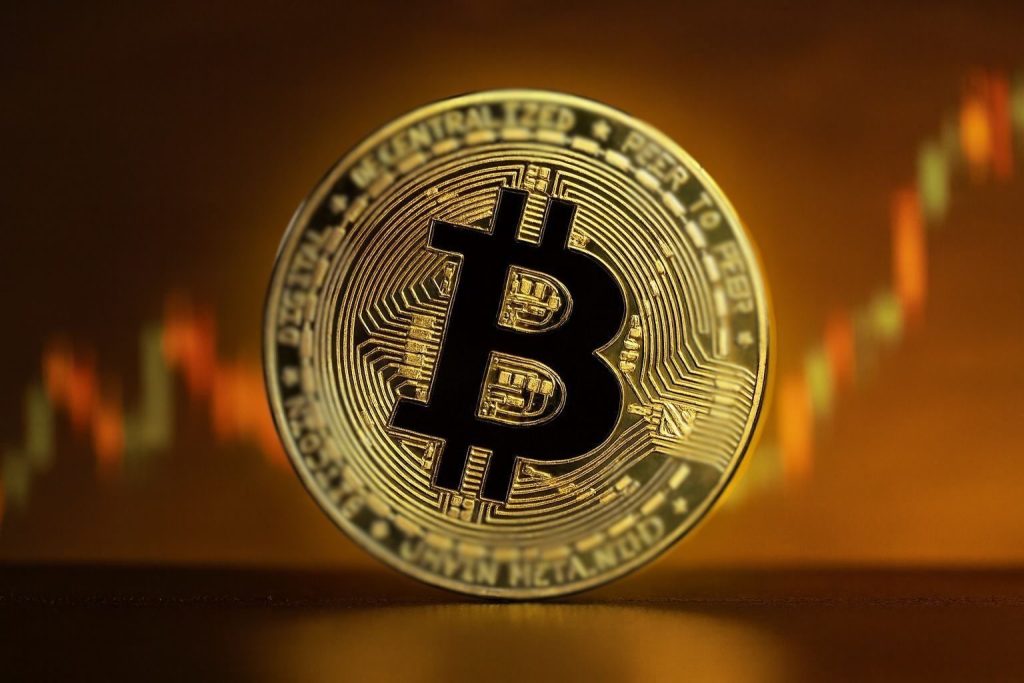Zurich, Switzerland – On Monday, 24 November 2025, the Swiss stock market ended a choppy session modestly higher, as a rally in technology and cyclical blue chips outweighed sharp losses in Julius Baer and lingering legal overhangs at UBS. The benchmark Swiss Market Index (SMI) closed at 12,654.12, up 0.17% on the day, after swinging between an intraday high of 12,712.12 and a low of 12,623.72. [1]
The move left Zurich broadly in step with a wider European rebound, where the STOXX 600 added roughly 0.3% as investors doubled down on Federal Reserve rate‑cut bets and watched for progress in a Ukraine peace framework being negotiated in Switzerland. [2]
SMI Edges Higher as Europe Rides Fed Cut Hopes
The tone on the SIX Swiss Exchange mirrored the broader European mood: cautious but clearly risk‑on.
- SMI: +0.17% to 12,654.12, recovering from midday weakness. [3]
- Pan-European STOXX 600: up around 0.3%, led by tech and rate‑sensitive sectors. [4]
- Wall Street backdrop: U.S. indices extended Friday’s gains, with the S&P 500 up about 1.5%, as dovish comments from Fed officials fuelled expectations of a December rate cut. [5]
According to market commentary, investors responded to remarks from New York Fed President John Williams suggesting that borrowing costs could come down “in the near term,” helping to ease nerves after a volatile November. [6]
At the same time, headlines about Ukraine peace talks – with Switzerland hosting key discussions and Kyiv revising elements of a U.S.-backed peace plan – added a geopolitical tailwind for risk assets while weighing on European defence stocks. [7]
Tech and Cyclicals Lead: VAT Group, Logitech and Holcim Stand Out
Beneath the modest headline gain, the SMI showed a classic pro‑cyclical rotation. High‑beta names and exporters outran defensive heavyweights:
- VAT Group jumped about 4.2%, topping the blue‑chip leaderboard as investors rotated into semiconductor equipment and automation plays. [8]
- Logitech International added roughly 3.3%, extending a recent rebound in European tech as AI‑ and cloud‑related demand underpinned growth expectations. [9]
- Holcim advanced around 2.5%, supported by the global bid for construction and infrastructure‑linked stocks that benefit from lower discount‑rate expectations. [10]
- Straumann, ABB, Richemont, Kuehne + Nagel, Sandoz, Galderma, Givaudan, Partners Group and Swisscom all closed between +1% and +2.2%, reinforcing the theme of strength in industrials, luxury and high‑quality growth. [11]
Turnover on Swiss blue chips was broadly in line with recent averages, with some data providers estimating volume in SMI constituents at just over 40 million shares for the day. [12]
The pattern fit neatly into the European story: technology, construction and travel‑linked sectors outperformed, while defensives and insurers lagged as traders positioned for a 2026 environment of slower but positive growth and lower rates. [13]
Julius Baer Drops Over 4% After CHF 149 Million Provision
The main drag on the Swiss market came from Julius Baer, which sank about 4.4% after the private bank unveiled a fresh CHF 149 million ($184 million) loan‑loss allowance and effectively drew a line under a lengthy credit review. [14]
In an update released before the open, Julius Baer said: [15]
- The additional provisions mark the final phase of a credit clean‑up focused largely on income‑producing residential and commercial real estate exposures that no longer fit the group’s strategy.
- As a result of the write‑downs and earlier charges, full‑year 2025 net profit is now expected to come in below 2024 levels, despite solid asset growth.
- Assets under management climbed to roughly CHF 520 billion by the end of October, supported by net new money of CHF 11.7 billion and rising markets, although inflows slowed later in the period.
Chief executive Stefan Bollinger also signalled that share buybacks will remain on ice for now as the bank continues to work through an enforcement procedure with Swiss regulator FINMA. Management indicated that serious discussions about restarting buybacks are unlikely before the end of February 2026, when incoming chief compliance officer Victoria McLean is due to take up her role. [16]
Analysts at Citi and Vontobel described the update as “mixed,” pointing to a cleaner balance sheet but softer profitability and slower momentum in the second half of 2025 – a combination that explains investors’ chilly reaction on Monday. [17]
UBS Under Legal Spotlight: Whistleblower Case and Credit Suisse Legacy Ruling
UBS Group stayed in focus throughout the session as two separate legal developments linked to the bank and its acquired Credit Suisse franchise hit the tape.
U.S. Supreme Court declines whistleblower appeal
In the U.S., the Supreme Court declined to hear an appeal by former UBS strategist Trevor Murray, who had sought to reinstate a $2.6 million jury award over claims he was fired for flagging misleading research practices. [18]
A lower appeals court had previously thrown out the verdict due to flawed jury instructions, despite an earlier Supreme Court ruling that had generally strengthened protections for whistleblowers under the Sarbanes–Oxley Act. Monday’s refusal to take the case leaves that reversal in place. [19]
The news is modestly positive for UBS from a pure liability standpoint, but it also keeps public attention on the bank’s litigation track record, a sensitive topic after the Credit Suisse takeover.
Credit Suisse / Ivanishvili case: liability upheld, bill recalculated
Separately in London, the Judicial Committee of the Privy Council dismissed an appeal from a Credit Suisse life‑insurance unit – now part of UBS – in a long‑running dispute with former Georgian prime minister Bidzina Ivanishvili. [20]
Key elements of Monday’s ruling: [21]
- The court upheld the bank’s liability in relation to a fraud perpetrated by ex‑adviser Patrice Lescaudron, who was convicted in 2018.
- However, the original $607 million damages award will be recalculated, with judges instructing lower courts to base the figure on the timing of the life policies rather than later asset transfers.
- A separate attempt by Ivanishvili to expand damages on the basis of alleged fraudulent misrepresentation was rejected.
UBS, which acquired Credit Suisse in 2023, said it “takes note” of the decision. Investors, meanwhile, treated the ruling as a reminder that legacy legal risks from Credit Suisse have not yet fully faded, even if much of the financial hit has already been provisioned or priced in. [22]
UBS shares were modestly lower on the day, underperforming the broader Swiss banking space but avoiding the kind of steep sell‑off seen earlier in the Credit Suisse integration saga. [23]
SGS Rises on Australian Data‑Engineering Acquisition
Away from the big banks, SGS – the Geneva‑based testing, inspection and certification group – generated one of the more constructive corporate headlines.
The company announced that it has signed an agreement to acquire Information Quality (IQ), an Australian specialist in digital engineering, asset data and information management systems and reliability engineering. [24]
- SGS described the deal as a way to strengthen its “digital trust” capabilities, deepening its presence in data‑heavy infrastructure and industrial projects. [25]
- The transaction is subject to standard regulatory approvals and is expected to close by early 2026. [26]
Shares in SGS added around 0.4%, suggesting investors see the move as a bolt‑on transaction that fits the group’s existing strategy rather than a risky, scale‑changing acquisition. [27]
Macro Backdrop: Payrolls Cool, GDP Reminder Keeps Growth Fears Alive
Monday’s trading in Zurich unfolded against a macro backdrop that remains decidedly mixed for Switzerland.
Labour market: nonfarm payroll growth slows
Fresh data from the Swiss Federal Statistical Office showed that non‑farm payrolls rose just 0.1% year‑on‑year in Q3 2025, easing from a revised 0.8% gain in the previous quarter. [28]
The slowdown adds to evidence that Switzerland’s labour market is cooling from very tight levels, which may be welcomed by the Swiss National Bank (SNB) but also hints at softer domestic demand heading into 2026.
GDP: Q3 contraction after U.S. tariff shock
Just a week earlier, official GDP data showed that the Swiss economy contracted by 0.5% quarter‑on‑quarter in Q3, reversing modest growth in Q2 and marking the first contraction since 2023. [29]
Analysts and policymakers largely attributed the drop to:
- A sharp fall in value added in the chemical and pharmaceutical sectors, which remain crucial export engines. [30]
- The impact of a 39% U.S. tariff on Swiss imports, imposed in August and only partially rolled back under a new trade deal announced earlier in November. [31]
Under that deal, Washington agreed to cut the tariff to 15%, easing some of the pressure on industrial exporters. However, SNB Chairman Martin Schlegel has cautioned that the change is “helpful” but not a “game changer” for growth, stressing that the original duties affected only a limited portion of Swiss exports. [32]
Private‑sector forecasts now generally see Swiss GDP growth slowing but remaining positive in 2026, helped by tariff relief but constrained by a softer global cycle and a still‑firm franc. [33]
SIX Group’s Pan‑European Ambitions Quietly Support the Zurich Story
Another medium‑term theme lurking behind Monday’s price action is the evolving role of SIX Group, which operates the Swiss and Spanish exchanges and, since mid‑2025, owns London‑based Aquis Exchange. [34]
In an interview last week, SIX CEO Bjørn Sibbern said the group is weighing the launch of a pan‑European equity exchange aimed at small and mid‑sized companies, leveraging its combined footprint in Zurich, Madrid and London. [35]
At the same time, SIX is: [36]
- Exploring smaller acquisitions in data and post‑trade services rather than large, highly leveraged deals.
- Dealing with a projected net loss of roughly CHF 300 million in 2025, largely due to a steep write‑down on its 10.5% stake in French payments firm Worldline, whose share price has collapsed.
For Swiss equity investors, the story matters because a cross‑border SME market anchored by SIX could deepen liquidity and broaden the capital‑raising ecosystem beyond the heavyweight SMI names, even if the group’s own profit and loss statement looks bruised in the short term.
Key Takeaways for Swiss Equity Investors
From Monday’s session, several themes stand out for anyone tracking the Swiss stock market into year‑end and beyond:
- Resilient headline index, big moves under the surface
- The SMI’s modest 0.17% gain masks strong outperformance in tech and cyclicals versus under‑pressure defensives and financials. [37]
- Julius Baer’s clean‑up comes at an earnings cost
- The CHF 149 million provision and guidance for lower 2025 profit suggest the bank is closer to closing its legacy chapter, but equity holders are paying the bill upfront via a weaker share price and delayed buybacks. [38]
- UBS risk story is shifting from survival to legacy legal noise
- The Supreme Court’s move in the Murray case and the Privy Council ruling in the Ivanishvili litigation highlight that legal and reputational issues remain part of the UBS investment case, even if they no longer threaten the bank’s franchise in the way Credit Suisse once did. [39]
- Corporate Switzerland is still expanding abroad
- SGS’s acquisition of Information Quality reinforces the picture of Swiss champions using M&A to build digital and global capabilities, even in a period of slower domestic growth. [40]
- Macro headwinds are real, but not yet overwhelming
- A Q3 GDP contraction and softer payroll growth confirm that Switzerland is feeling the pinch from U.S. tariffs and a weaker global cycle. Yet with tariffs now reduced and the SNB signalling caution rather than panic, equity markets continue to price in a slowdown rather than a full‑blown recession. [41]
- SIX’s pan‑European push could be a slow‑burn positive
- If the SME exchange concept progresses, Zurich’s status as a hub for both blue chips and growth names could strengthen over the next cycle, supporting valuations and liquidity for Swiss‑listed firms. [42]
For now, 24 November 2025 will likely be remembered as a quietly constructive day for Swiss equities: the index nudged higher, tech and industrials re‑asserted leadership, Julius Baer absorbed another hit in its clean‑up process, and the macro narrative stayed challenging but manageable – a snapshot of a market that is bruised, not broken.
References
1. www.rttnews.com, 2. www.reuters.com, 3. www.rttnews.com, 4. www.reuters.com, 5. www.barchart.com, 6. www.reuters.com, 7. www.reuters.com, 8. www.rttnews.com, 9. www.rttnews.com, 10. www.rttnews.com, 11. www.rttnews.com, 12. www.investing.com, 13. www.reuters.com, 14. www.rttnews.com, 15. www.reuters.com, 16. www.reuters.com, 17. www.reuters.com, 18. www.devdiscourse.com, 19. www.scotusblog.com, 20. www.reuters.com, 21. www.reuters.com, 22. www.reuters.com, 23. www.rttnews.com, 24. www.sgs.com, 25. www.sgs.com, 26. www.sgs.com, 27. www.rttnews.com, 28. www.rttnews.com, 29. www.swissinfo.ch, 30. www.swissinfo.ch, 31. www.ft.com, 32. www.tradingview.com, 33. tradingeconomics.com, 34. www.fnlondon.com, 35. www.reuters.com, 36. www.reuters.com, 37. www.rttnews.com, 38. www.reuters.com, 39. www.devdiscourse.com, 40. www.sgs.com, 41. www.swissinfo.ch, 42. www.reuters.com










